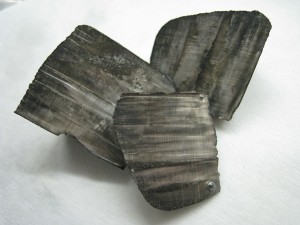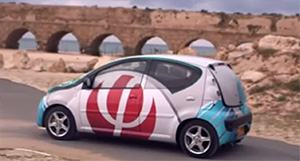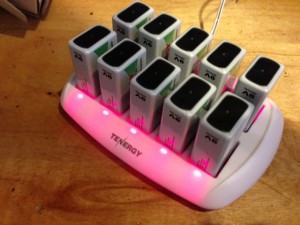 A new lithium-sulfer battery technology under development promises to prove around four times the energy storage as current lithium ion batteries. Also, since it doesn’t use a liquid electrolyte, it’s expected to be safer (ie, less flammable) than existing technologies. It’s in the prototype phase, which usually (for stuff like this) means a couple years from production.
A new lithium-sulfer battery technology under development promises to prove around four times the energy storage as current lithium ion batteries. Also, since it doesn’t use a liquid electrolyte, it’s expected to be safer (ie, less flammable) than existing technologies. It’s in the prototype phase, which usually (for stuff like this) means a couple years from production.
All in all, it sounds remarkable, but what’s really cool is that announcements like this are becoming pretty common…there’s often another new fantastic battery technology mentioned in the news. It’s an indication that, overall, battery storage is quickly headed to the kind of levels where it’ll be making a big impact on our lives…first with electric cars, and soon with off-the-grid power supplies for houses and the development of ‘micro grids’. Cool stuff.
(via inhabitat)


 Phinergy has developed a battery that’s, well, a bit difficult to categorize. It’s powered by aluminum and air, but it’s not readily rechargeable. Every 200 miles it needs to be refilled with water, and after 1000 miles, the aluminum plates need to be replaced. So, what’s the point? Well, it has some potential as a range-extender used in conjunction with a conventional rechargeable battery. This Al battery could be a ‘reserve’, or for long road trips, actually replaced enroute (the cost of the raw material being replaced would be ~$50, so it might not cost much to do this). It’s an interesting idea…and ideas like this take creative marketing and some lucky business deals to work out. We’ll see.
Phinergy has developed a battery that’s, well, a bit difficult to categorize. It’s powered by aluminum and air, but it’s not readily rechargeable. Every 200 miles it needs to be refilled with water, and after 1000 miles, the aluminum plates need to be replaced. So, what’s the point? Well, it has some potential as a range-extender used in conjunction with a conventional rechargeable battery. This Al battery could be a ‘reserve’, or for long road trips, actually replaced enroute (the cost of the raw material being replaced would be ~$50, so it might not cost much to do this). It’s an interesting idea…and ideas like this take creative marketing and some lucky business deals to work out. We’ll see.
